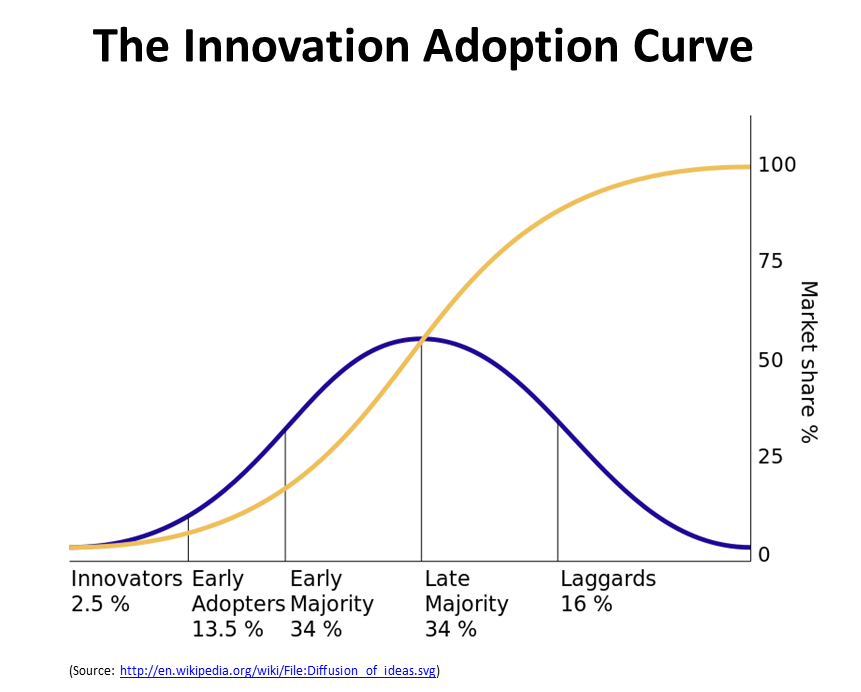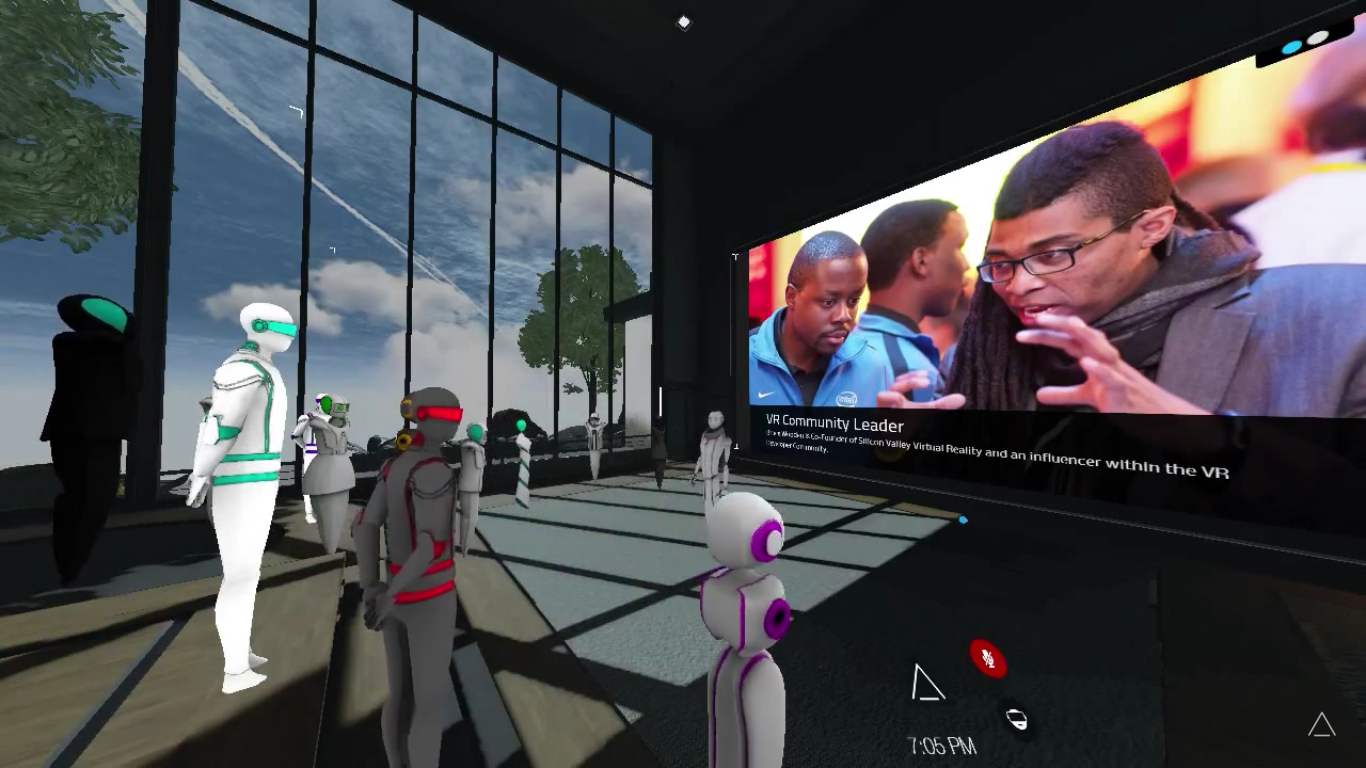In the online, Social VR world, I’m probably considered TOUFU: a Typical Outside User From Unknown. I’m not a complete ghost with no identity or footprint: on older social platforms I rapidly moved from Lurker to participant to Organizer: a Chat Room creator in AOL Chats in the early 90’s; participant and sometimes leader at hash tagged regular Twitter “tweetups” by 2008; creator and manager of Facebook and LinkedIn groups and pages, etc. I’m not everywhere all the time: I’m in the wrong demographic for YouTube and Snapchat as a regular social participant. As not a gamer for leisure fun by nature, I don’t do much on Twitch, I am not a denizen of MMOGs, and have only taken a few educational MOOC’s, though I’ve helped to design some and believe there’s a unique opportunity in them in VR. Then there’s Second Life, a crazy amalgam of Social VR, Playland, Classrooms, role-playing fantasy space, and still around 10+ years later, for what it’s worth. Did it peak too early for the VR boom or will Second Life have a Second Life? I haven’t yet heard.

For the more mature non-VR platforms, Facebook is making the first apparent moves to get there, cautiously. Facebook Spaces seems like an MVP at best, with the safety loaded at “BETA”. I’m trying to get a handle on that, bunny rabbit ears and pencil notwithstanding.
I’m visiting AltSpaceVR as well; notice, I say “visiting”, as I explore the Social VR world, without having made the commitment to tap in and take up residence firmly there yet either. And that’s what makes me TOUFU: a Typical Outside User From Unknown. I show up a little bit late for scheduled events, so I don’t have to get grilled making small chat with the host waiting for a quora to arrive; I stand just a little bit back from the front row and I wait until others grab a drink or a slice of pizza. My name tag/username does give my IRL name and my avatar has elements of the “real” me. My FOMO however is definitely real. I work mostly remotely, my watercooler conversations are done via group text, twitter, video conferences, or, I’m hoping, in Social VR.
To be a UX/CX/Service Designer (or a reporter, take your pic) I purposefully present myself with the persona of an “early majority” type, on the bell curve from “early adopter” to “laggard”. This gives me the ability to blend in a little more, to do the ethnographic research in the field without being too obvious.

I am watching to see how people act (and react) to standard social cues and the new ones created by these virtual environments. We’ve moved past strictly typing (AND AREN’T WE GLAD ABOUT THAT 🙂 ), to use our voices (mostly unaltered). And MEMEs and GIFs and video. When we create avatars, we have more choices; Are we fully human, are we following our cisgender/transgender/androgyny preference, cyborg, fantasy non-human being, robot… make it up as we go along?

Facebook Spaces Beta allows the creation of avatars that is initiated through facial recognition of one’s existing library of pictures (i.e. selfies) in your existing account, so fantasy characters and robots don’t seem to be an option here. But you can put on Snapchat-like filters, if that’s any consolation.
Gen-Z Snapchat-filter/Minecraft kids might not need such reality-based assurance that they have to maintain an identity anchored to “real life” in order to jump in, no adjustment period required. They are encouraged to be makers and creators, and may enjoy (prefer?) presenting themselves through an image that doesn’t come from the silver-backed mirror that reflects only their physical world.
How much of our native location/language/cultural norms, biases will we conform to in Social VR? And, assuming that we are here to engage primarily in social activity, rather than business, will we play, learn, be intimate and “just hang” with good will towards others? We’ll see how Social VR social norms evolve. We’ve watched, trolling, bullying and other forms of personally invasive and abusive behavior require monitoring and control in mature social platforms. I think using AI for monitoring and learning from past lessons elsewhere could make it less of a wild west, even at this early stage.
How Social is Social going to be?
There was free flowing beer the other night in AltHSpaceVR, along with pizza and burgers. (Nothing yet in Spaces). What about other earthly pleasures? Sex was around in Second Life, where you could create anatomically complete human avatars. I think Facebook Spaces will be much more restricted, with kind-faced, genital-free avatars. Let violence and kingdom-building happen in Worlds of Warcraft; I don’t see that happening in Facebook’s social VR. They just hired thousands to monitor and prevent the sharing of live criminal violence on Facebook’s non-VR platform, that’s a lesson learned for real-time free will interaction they will not want to see played out in VR.

Bruce Wooden, Co-founder/Head of Experience of AltSpaceVR seen onscreen (right) while in AltSpaceVR. SOURCE: roadtovr.com
I had a great conversation with AltSpaceVR co-founder and Head of Experience Bruce Wooden (@cymaticbruce) yesterday (link to the interview coming) and we spoke at length about social interaction in AltSpaceVR, where the norms of good social behavior and keeping the virtual citizenry to those norms are evolving. Boomers, GenXers, and Millennials come from different mindsets, part of finding the sweet spot will be determined by the most active groups that show up and stay.
I do hope the spirit of cooperation, respect, creativity and joy that is coming out of the new era of tech-driven disruption and innovation will truly dominate social VR, across all of the platforms that together will create the boom of Social VR. By then, as has happened with the Facebook-embracing parents of Snapchat kids, I might be seen as a different flavor of TOUFU -Typical Older User, Forgotten, Unknown. That’s OK, I’ll be a happy old cyborg watching classic social interactions play out in new spaces.